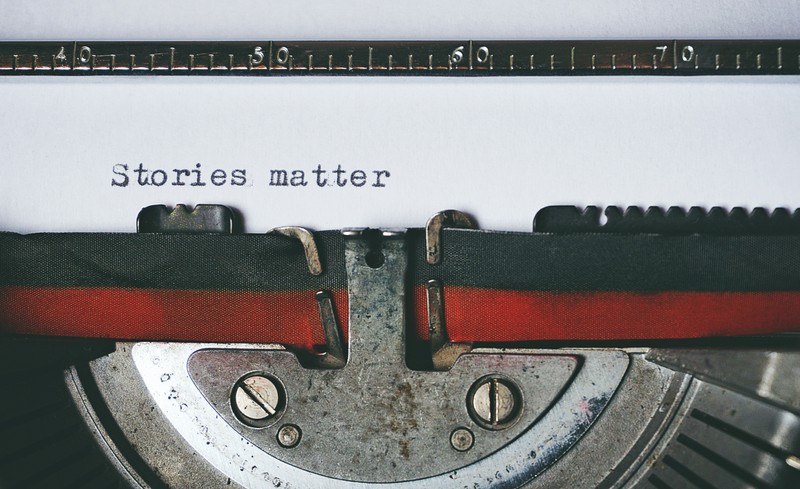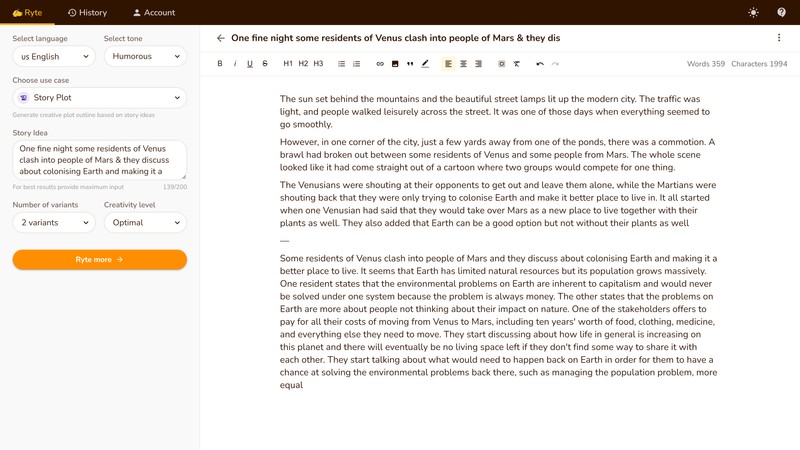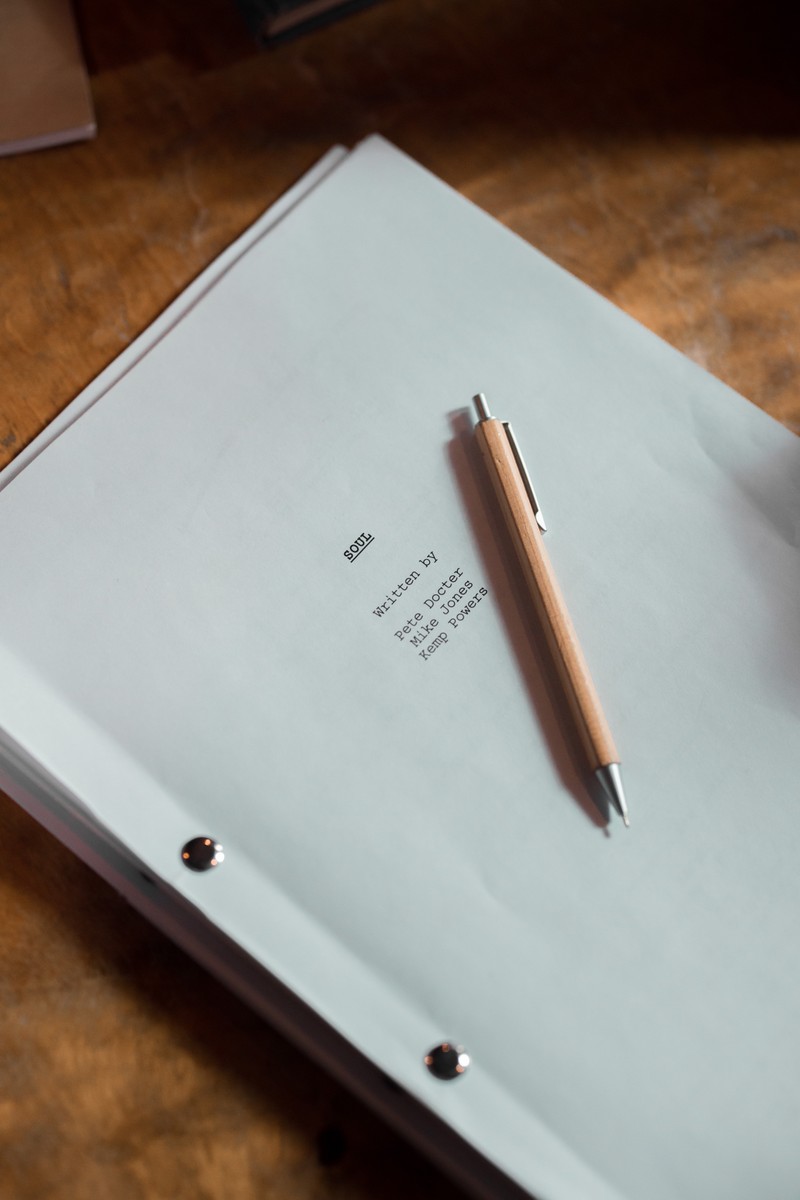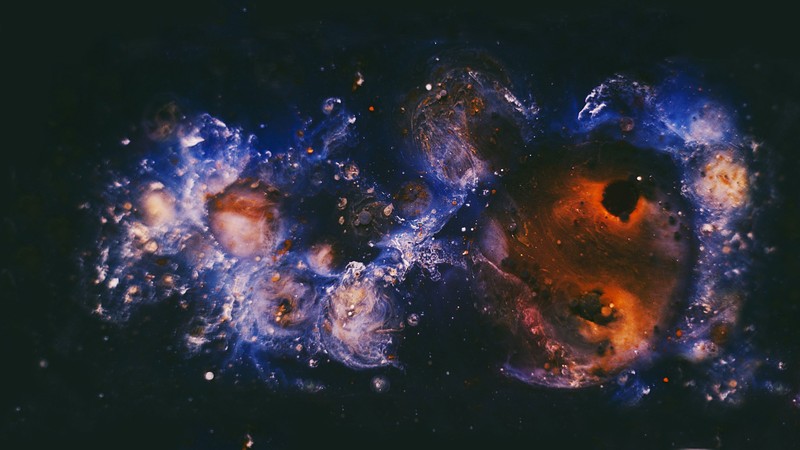Introduction To The Art of Story Writing
January 26, 2023
Summoning the Storyteller Within Us
Storytelling is an art that has been around for centuries. It’s the oldest form of human expression and is still as powerful today as it was back then. There are many different techniques that can be used to develop a plot, create storylines and make characters more interesting & believable.

No wonder who you are & what you do, our Ryting Tribe honestly believes that there lies a storyteller within all of us. While some of us are gifted with the art, others might need a push or poke to invoke the storyteller within them. Irrespective of the category you fall in, your favourite AI buddy will always be there to ink your imagination.
The first step in developing a story is to come up with an idea. This can be done by brainstorming or jotting down all the different ideas that come to mind. The next step is to pick one idea and develop it into a full-fledged story by adding characters, conflict, setting and dialogue.
Getting Started
The first step in developing a story is to come up with an idea. This can be done by brainstorming or jotting down all the different ideas that come to mind. The next step is to pick one idea and develop it into a full-fledged story by adding characters, conflict, setting and dialogue. Got a cool idea with you? Do let our AI know and see the magic happen.

Writing the Opening Hook
The opening hook is the first sentence of your story. It should be engaging and intriguing enough to make the reader want to read on. It can be a question, a quote, or something that makes the reader want to know more.
A good opening hook will make your reader curious about what is happening in your story. It should also make them feel like they are part of it, and they are experiencing what you are writing about. Remember, the feedback on your story is largely dependent on whether or not your readers would be able to picturise and enjoy it at the same time. Keep the opening clean, and simple & avoid using jargon.
Introducing Characters
Creating characters is a very important aspect of storytelling. A story without characters is like a movie without actors.
It’s important to know the character well before you start writing the story. You should have a clear picture of who your character is and what their personality traits are. Once you have this information, you can start to build your character by adding more detail and personality traits that will help make them come alive on the page.
One of the ways to go about creating your characters can be by writing a character profile before beginning your main story. This would entail writing some sort of character biography for your leads. This could include age, background, irks, general behaviour, strengths, weaknesses, etc.
Structuring the Story – How do you make it flow?
A story needs to have a clear narrative arc. It should start with an interesting hook and then build up to a climax and a resolution.
The plot points are the moments in between the narrative arc when something exciting or unexpected happens. They can be major or minor, but they need to be memorable and significant enough for the reader to want to keep reading.
The introduction should provide context on what is being discussed in the section. The introduction should also provide keywords that will help users understand what this section is about as well as give them an idea of what they can expect from this section.
Mapping the Plot and Structure
Understanding the plot and structure of a story is very important for any writer. This will help in writing a better story.

A plot map template is a visual representation of the plot of a story. It helps to visualize the events that happen in your story and how they are related to each other. One of our favourite elements of a story is ‘callback’. A callback is either a reference to an event that takes place earlier in the narrative or a way to tie the loose ends of a later, seemingly unrelated event. While a couple of loose ends may provoke the reader to keep on reading to find more to connect everything, too many loose ends may end up in knots thus making your story confusing or tacky. A story structure template is also important in order to understand how events are arranged and which one comes first, second, third etc.
How to End a Story or Novel
Probably as crucial as your opening hook, the ending should always be crisp with probably a little room for the reader’s imagination to go wild. A story with an underwhelming end can leave a sour taste about the entire read.
It’s the last thing they see, and it’s what will stick with them for years to come.
There are many ways to end a story or novel. Some authors use cliffhangers, others use a happy ending, while some prefer to leave things open-ended and ambiguous.
Here are some quick reads by your friendly AI writing assistant.
Clash of Planets
The sun set behind the mountains and the beautiful street lamps lit up the modern city. The traffic was light, and people walked leisurely across the street. It was one of those days when everything seemed to go smoothly.
However, in one corner of the city, just a few yards away from one of the ponds, there was a commotion. A brawl had broken out between some residents of Venus and some people from Mars. The whole scene looked like it had come straight out of a cartoon where two groups would compete for one thing. The Venusians were shouting at their opponents to get out and leave them alone, while the Martians were shouting back that they were only trying to colonise Earth and make it a better place to live in.

It all started when one Venusian had said that they would take over Mars as a new place to live together with their plants as well. They also added that Earth can be a good option but not without its plants as well. Since global warming is a pressing issue for the Earth, the survival of indigenous Venetian plants seemed highly unlikely. The Martians were shocked and angered by this, and soon a fight broke out. A few minutes later, Venus turned from a place of peace to a battlefield between the two groups. One Martian had taken advantage of the chaos and escaped to Earth through one of the holes in their Venusian enemies’ chest which they left behind in their struggle. The Martian ran to Earth to warn them about the impending takeover, but one of the plants on Earth had eaten him whole. The Martian, helpless yet determined tried its best to alert at least the plant kingdom of the upcoming invasion but alas, it was soon consumed by the sap of the very plant. The Martian had passed from Earth as well.
Back in the alternate universe, Venusians turned out to be victorious and headed toward the Earth. Earth- a planet with many different habitats and lifestyles. A planet visited by many different aliens. It had many things to offer but not without its own internal conflicts.
Initially, Venusians got anxious about Earthians’ diversity & strength but soon enough they were able to see through the gaps. What seemed like a close-knitted ecosystem from far turned out to be hollower than anything else.

With their wit & charm, Venusians were able to successfully overtake everything on Earth because of its gaps and named their new planet/home as ‘Verth’. The native Earthians eventually succumbed to their own darkness & greed.
Man vs AI
As a professor of philosophy, I am brought to a room to question two boxes to identify which one is human and which is AI. Whoever I selected as being not human would be demolished. I began asking simple questions to the female voices about their childhood, favourite memories, and relationship experiences, and they both seemed to remember the details reasonably well, although one of them recited a movie scene giving me an impression of AI.

I turned up the heat and started asking about spirituality. To which Box A replied “I’m an Atheist. We’re anyway going to become a photon one day.” She laughed at that. While Box B gave very deep and moving philosophical answers to the same question. I was convinced Box B was human. When the man for whom I asked for my answer opened Box B, a computer sat on a desk while a pretty woman walked out of Box A.
I was stunned about AI’s understanding of spirituality and how it touched me deeper than a human’s. It took me a while to get back to my senses until I looked at the calendar. ‘September 2034’, it read. “Never mind”, I murmured as I let out an unconvincing smile.